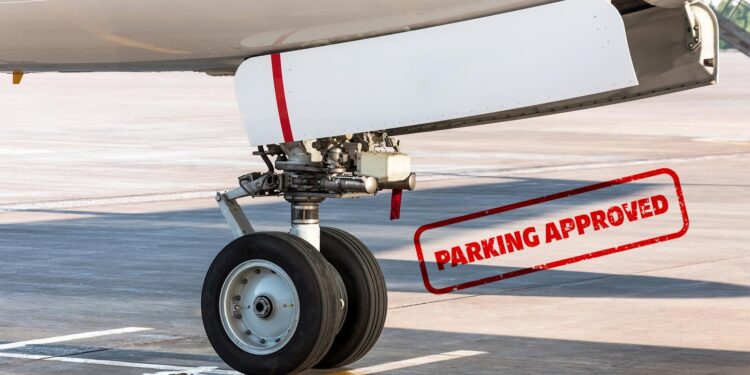Business Aircraft Ops to Chile: Airport Slots & Permits

This is a post by author Rodrigo Silva. Rodrigo is the FBO Operations Agent at Aviasur, a Universal Aviation® Certified ground handler, which has an FBO in Santiago, Chile and provides ground support throughout the country. Rodrigo is an expert on business aircraft operations in Chile and can be contacted at rodrigosilva@univ-wea.com.
This business aviation blog post is part of a series on operating to Chile and continues from our last article: “Business Aircraft Ops to Chile: CIQ Clearance.”
For general aviation (GA), Chile is an easier operating environment than many other regions of the world. Airport slots are normally not a factor, and permit revisions are straight-forward. However, to avoid permit and slot complications it’s always best to submit your requests through your 3rd-party provider or local handling agent.
The following is an overview of what you need to know:
1. Airport slot requirements
In Chile, airport slots are only required for Santiago (SCEL) and Easter Island (SCIP), and only in certain cases. When departing SCEL, slots are only needed for flights over the Mendoza flight information region (FIR) — heading toward Argentina — due to traffic congestion in this airspace. In the case of SCIP, slots for all arrivals/departures must be obtained. No documentation is required with airport slot requests. And, in all cases, scheduled commercial flights and air ambulance operations take precedence over GA. Private non-revenue and charter (non-scheduled commercial) slot requests are handled in the same manner.
2. SCEL slots
When departing SCEL and traveling to the Mendoza FIR, air traffic control (ATC) will issue the slot when your flight plan is confirmed. Slot requests are normally coordinated by your ground handler. To obtain a slot, the handler will send your tail number and entry time over Mendoza FIR to ATC, via email, and the approved slot will be valid for +/- 10 minutes. Note that airport slots should be requested 24-48 hours prior to departure from SCEL, and slot confirmations usually match operator requested estimated times of departure (ETDs). However, there are times when slot times vary from ETD, but the difference is almost always less than one hour. From time to time, based on large events in the area, SCEL may impose temporary arrival/departure slots for all operations but this is rare.
3. SCEL engine start up
For SCEL, departures over the Mendoza FIR, ATC provides you with two times, one for engine start up and the other for wheels up. It’s always best to coordinate slots with your local ground handler as they’re able to communicate quickly with ATC.
4. SCIP slots
SCIP slot requests may be sent to either ATC at SCIP or SCEL and should be requested a minimum or 24-48 hours prior to ETD/estimated time of arrival (ETA). Both ATCs review your request prior to confirming the slot. Information that must be provided to ATC includes tail number, schedule and point of no return (PNR), as indicated in the ICAO section of your flight plan. Be aware that SCEL ATC will not issue departure clearance for SCIP unless you have an approved arrival slot at SCIP. Slots for SCIP have deviations of +/- 15 minutes and slot confirmation IDs are not provided.
5. Slot issues at SCIP
Scheduled commercial traffic into/out of SCIP always takes priority for slot allocation. Although there are no official peak hours of commercial activity at SCIP, it’s best for GA operators and their handlers to review daily airline schedules prior to submitting slot requests.
6. PNR considerations and missed slots
As closest alternates for SCIP are Concepcion (SCIE) and SCEL — 1930 and 2029 nautical miles (NM) away — it’s always important to consider aircraft endurance and PNR information if you do not have endurance to fly to and from SCIP with onboard fuel. Should you miss a slot the delay in obtaining a new one could be up to four hours, for those who have PNRs, but are normally be under one hour if you have no PNR.
7. Permits and PPRs
Landing permits are needed for all operations to Chile and requirements are the same for private non-revenue and charter operators. Also, overflight permits are needed, with the requirements remaining the same for both private non-revenue and charter operators. Landing permit requests are submitted via an online website, at least 24 hours prior. Chilean Civil Aviation Authority (CAA) operates 24/7, including holidays. For air ambulance flights, permit approvals are processed with much shorter notice. Note that CAA charges fees for both permits and navigation charges and these are billed after your flight has commenced. There are currently no prior permission required (PPR) mandates for any airport in Chile.
8. Permit documentation
The only documentation that must be submitted with permit requests is a copy of the worldwide liability insurance policy. Information that needs to be provided to CAA includes:
- full aircraft details
- operator information
- schedule
- pilot in command (PIC) name
9. Permit approval
CAA will send an email confirming that the request has been received. The permit confirmation takes the form of three numbers, a forward slash and the year. For example, it could be 417/2016. This confirmation must be placed in remarks section 18 of your ICAO flight plan. Note that ATC will check your tail number against the list, to confirm that you have a valid permit, if a confirmation is not noted on your flight plan.
10. Aircraft with more than 19 passengers
Be mindful that the permit approval process is somewhat different for aircraft with more than 19 passengers. While you submit the same information via CAA’s website, the commercial department of CAA also reviews your application. Permit lead time for operations with more than 19 passengers is a minimum of 48 hours.
11. Permit validity
Landing permits for Chile are valid +/- 72 hours and for stays of up to 90 days. It’s usually only possible to extend the 90 day stay limitation if you’re faced with a maintenance issue or other justifiable reason for permit extension.
12. Permit revisions and changes
Permits need to be revised if schedule changes outside of permit validity. But, the only time a new permit is required is in the event aircraft tail number changes. Other permit changes are considered to be only revisions.
13. AOEs upon request
Certain airports in Chile that are normally domestic airports can be transitioned to airports of entry (AOE) upon request. We recommend 24-48 hours lead time when making such requests. Approval of AOE status for the airport in question is always at the customs, immigration, and quarantine’s (CIQ’s) discretion.
14. Additional reading: Business Aircraft Ops to Chile – Series Index
Note: Links will be updated as articles are published.
- Part 1 – airport operations
- Part 2 – ground handling
- Part 3 – customs, immigration and quarantine
- Part 4 – airport slots and permits
- Part 5 – aviation fuel and security
- Part 6 – flight planning and weather
- Part 7 – additional operating considerations
Conclusion
Be mindful that operating complications are possible with last minute or short notice schedule changes to/from SCIP. This is especially true for operators who have a PNR. Also, be aware of landing permit requirements, especially for aircraft with more than 19 passengers due to the difference in lead time.
Later, we’ll discuss fuel and security for Chile and their impact on your trip.
Questions?
If you have any questions about this article or would like assistance planning your next trip to Chile, contact me at rodrigosilva@univ-wea.com.




